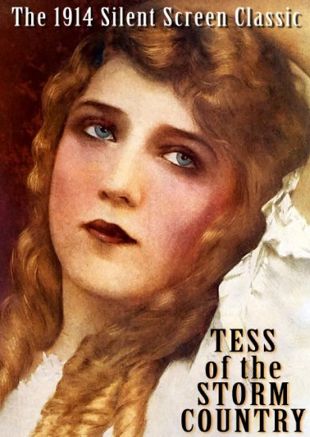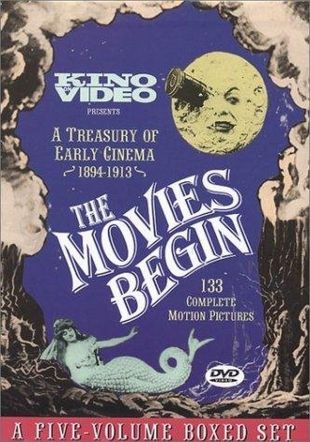All but forgotten today, American director Edwin S. Porter was an instrumental force in the development of motion pictures. Though not the father of the narrative film per se (that title could be claimed by Georges Melies, Walter Booth, and/or James Williamson, from whom Porter copied many concepts and storylines), Porter's importance should not be underestimated.
Holding down several jobs during his first three decades, the industrious Porter was most attracted to machine work, notably electric-equipment installation; in collaboration with US Navy Admiral Bradley Allan Fiske, Porter developed the Fiske electric range-finder. In the late 1890s, Porter became part of a regional management team that handled the Vitascope, an early motion picture projector, though he didn't stay with this team for long. After a failed business venture involving a rival projection device called the Projectorscope, Porter invented a vastly improved projector, delivering a brighter and steadier picture, known as the Beadnell (in honor of his partner). Production of this commodity ended when Porter's factory burned down in 1900. Meanwhile, Porter joined Thomas Edison as a machinist, and began submitting films to Edison's company as a journeyman exhibitor; by 1901, he became involved in full-fledged motion picture production in tandem with Edison.
A number (though not by any means most) of the short dramatic and nonfiction films (or "actualities") released by the Edison company in the first three years of the 20th century were photographed and directed by Porter, many of them both inventive and innovative. In 1902, Porter turned out a five-minute subject titled Life of an American Fireman. At first, Porter did not seem to realize the potential of this work, and returned to his one-scene comedies and trick films. Then in 1903 came Porter's masterpiece, The Great Train Robbery. Where the scenes in Life of an American Fireman were such that they could be arranged in any order and still tell a story, Great Train Robbery attained recognition as one of the frirst major motion pictures to move the story forward with each successive scene (though, technically speaking, not the first to do so, as Porter's Jack and the Beanstalk preceded Robbery by a year). In addition, the storyline of Robbery was exciting and involving -- and as such, it moved an audience. The Great Train Robbery became the fledgling movie industry's first box-office hit, establishing the basic storytelling grammar that would be adhered to in films until such future directors as D.W. Griffith would develop cross-cutting and closeups to intensify the dramatic content.
Now Edison's most valuable employee, Porter was given carte blanche to turn out a number of creative and fascinating one-reelers, including The Kleptomaniac (1905), Dreams of a Rarebit Fiend (1906) and Rescued from an Eagle's Nest (1908) (which featured D.W. Griffith in the leading role). During this time, he experimented with trick photography, stop-motion animation, and split-screen shots; he also remained a technician at heart, designing Edison's new state-of-the-art studio in 1906 and working on a further-improved projector called the Simplex. Despite his accomplishments for Edison, Porter was ultimately fired by that company.
Working in concert with filmmaker Adolph Zukor and Broadway producer Daniel H. Frohman in 1912, Porter launched the "Famous Players in Famous Plays" series with a feature-length version of Queen Elizabeth starring Sarah Bernhardt. At the new Famous Players company (later known as Paramount), Porter scored another hit with his direction of The Prisoner of Zenda (1913), with James K. Hackett repeating his stage role. He also guided Mary Pickford through many of her early successes, notably Tess of the Storm Country (1914). Throughout his Famous Players days, Porter constantly clashed with Zukor and Frohmann over business and creative matters; he ended both his association with the studio and his directorial career with the 1916 Pauline Frederick vehicle, Lydia Gilmore. Porter then returned to his first love, inventing and improving film equipment, expanding his experimentation to 3-D photography, lightweight motor-operated cameras, and talking pictures. Pouring his movie earnings into his Precision Machine Company, Porter flourished until the 1929 stock market crash. While he didn't lose all his money, Porter became a recluse, taking whatever machine-shop jobs that came along. His principal goal in the '30s was to develop inexpensive home-movie cameras with pre-loaded film magazines, but a stroke sharply impaired his ability to function. Edwin S. Porter died at New York's Taft Hotel at the age of 71; his passing was virtually ignored by the industry that he'd help put on the map.


